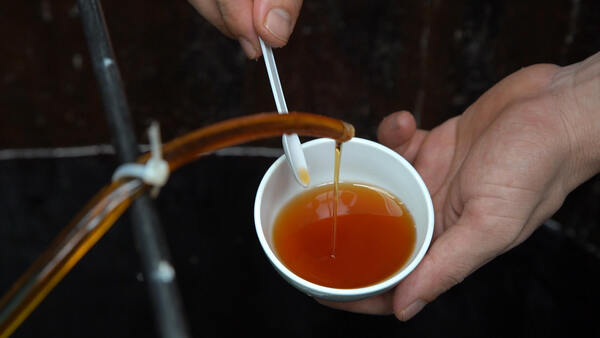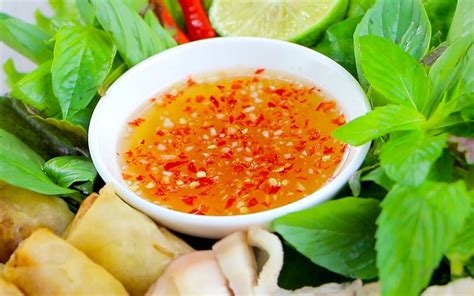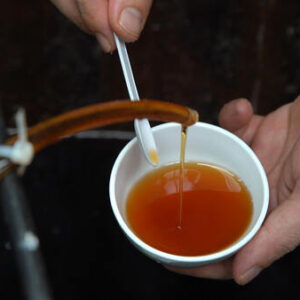Fish sauce is the “national soul and national drug” spice of the Vietnamese people, which distinguishes Vietnamese food the most, as documented not only in old Vietnamese bibliographies, but also in memoirs, diaries, and diaries. Westerners who were present in Vietnam hundreds of years ago signed it.
Forfaits touristiques recommandés :- 4 Days Explore The Highland of Southern Vietnam Tour
- 10 Days Highlights Of The North Vietnam Tour
- Discover Vietnam – Country of Dragons Tour in 17 Days
Join Paradise Travel to learn what few people know about fish sauce and how to utilize it more effectively!
Origin of Vietnam fish sauce
Vietnamese people understood how to create and use fish sauce before 997. At the time, the Vietnamese sauce must have been a well-known specialty, as Chinese kings and emperors could “smell” it from thousands of miles away and requested that the Dai Viet court pay tribute to them.
However, after reading this text in the Dai Viet history book, researcher Pham Hoang Quan posed an intriguing question: “Chinese people do not have a tradition of eating fish sauce, but they eat soy sauce, so why don’t they eat fish sauce?” requesting an homage? Or was it during the Early Le period, when Vietnamese fish sauce was so scarce and valuable that people had to catch each other with it?”
Indeed, as the Chinese consume soy sauce, they regard it as their primary condiment, making Chinese food appear similar to Vietnamese dishes on the surface, but the reality is quite different.

Vietnamese is making fish sauce
Phu Bien Tap Luc noted that fish sauce was a specialty of Thuan Quang, and that the Nguyen lords forced the households doing the job to pay a separate tax, replacing the nail tax, that is, instead of paying personal tax, the households doing the job had to pay a certain amount of fish sauce to the Lord’s court every year.
Around the end of the Nguyen dynasty, the profession of making fish sauce began to establish in Binh Thuan province, with roughly 50 people concentrated in Dong Quan ward. The state requires that 30 of them pay the state one box of fish sauce each year, while the remaining 20 pay two jars of sardines and one jar of shrimp paste.
Production process of Vietnam fish sauce
Ingredients
Selecting the primary components (fish and salt) is a crucial step in the creation of finished products with a consistent flavor. To produce the finest fish sauce, careful consideration must be given to the choice of fish, typically anchovies. The fish should be in the appropriate season, fresh with clear eyes, and should not be mixed with other types of fish. The salt used for marinating the fish should consist of large grains, featuring an opaque white center, slightly translucent edges, and a moderate density. Additionally, it is advisable to store the salt for approximately 12 months to allow it to eliminate any acrid or bitter flavors it may possess.
Fermentation
This practice has ancient origins and has served as a valuable protein source for both the local population and tourists in Vietnam. Many centuries ago, fishing boats primarily focused on catching relatively small inshore fish, never venturing far into the open sea. The discovery that stacking small fish in barrels and filling them with salt would yield a flavorful sauce remains attributed to an unknown innovator who made a significant culinary contribution to this region. Once the barrels are filled, the fish is pressed to extract the salty liquid. This liquid is then reintroduced into the barrel, and the process continues for an additional three months.
How to use Vietnamese fish sauce?
In Vietnamese cuisine, fish sauce serves a dual role as both a seasoning and a dish, and it is employed as a condiment in various types of meals. Beyond its use as a flavor enhancer and a unique addition to Vietnamese cuisine, fish sauce also finds application as a remedy for treating ailments and promoting vitality.
Utilized as a Seasoning for Marination and Cooking
Fish sauce is frequently employed to marinate and season various Vietnamese dishes, including poultry, fish, and seafood, before cooking. Its role extends beyond ensuring even spice distribution, as it imparts a delightful aroma to the ingredients. Whether it’s enhancing the flavor of a bowl of pho, fish porridge, or beef noodle soup, or infusing braised dishes (such as pork, chicken, or duck) with its distinctive aroma and taste when used as a marinade, fish sauce enhances the overall culinary experience. However, not all dishes are suitable for marination with fish sauce, given its characteristic scent and saltiness.
Fish sauce as a dipping sauce in Vietnam
Fish sauce is commonly used to create sweet and tangy dipping sauces for various dishes, often combined with complementary spices such as garlic, chili, lemongrass, ginger, lemon, sugar, and vinegar. These unique combinations result in different dipping sauces tailored to regional preferences and tastes, ranging from spicy in the central region to sweet and sour in the south, and rich in the north. Virtually all renowned Vietnamese dishes, including bun cha, broken rice, and spring rolls, incorporate fish sauce as an essential component that contributes to their distinctive and delectable flavors. Here are some suggestions for combining Vietnamese fish sauce with other ingredients to craft dipping sauces for diverse dishes:
For boiled meats and vegetables

Fish sauce using with boiled vegetables
To enhance the appeal of boiled dishes, you can create a sour-sweet sauce by mixing fish sauce with filtered water, sugar, lemon juice, garlic, and minced chili. Stir the mixture until the sugar fully dissolves to achieve a dipping sauce with a harmonious blend of sour, spicy, salty, and sweet flavors.
For seafood in Vietnam
Vietnamese seafood is often enjoyed with a fish sauce mixture infused with ginger, chili, and lemongrass. Crush these ingredients and combine them with fish sauce, sugar, and vinegar to create a delectable herb and fish sauce concoction that elevates the seafood experience.
For Vietnamese delicacies
For dishes like banh cuon (steamed rice rolls), a flavorful dipping sauce is a must. Simply mince garlic and chili separately and add them to fish sauce already mixed with sugar. Vietnamese spring rolls also require a dipping sauce made from fish sauce, water, sugar, lemon juice, along with chili and minced garlic to complete the culinary masterpiece.”
Interesting facts about vietnam fish sauce you may know
Pure salt for the best fish sauce
Pure sea salt, which often has a NaCl concentration of more than 95%, must be preserved for at least a year for the salty, bitter, and acerbic qualities to dissipate, after which the salt will impart a sweet, salty flavor to the fish sauce.
The first fish sauce is called “mắm nhĩ” in Vietnam
“Mắm nhĩ” is probably not a weird spice to Vietnamese people. Fish sauce, which originated from the traditional method of creating “mắm nhĩ”, is also the sort of fish sauce with the highest protein content. Today, industrial fish sauce makers choose this sort of fish sauce as a manufacturing material based on Ministry of Health standards – the most significant factor in producing delicious and appealing industrial fish sauce – mắm nhĩ bottles.
The reason it’s called “mắm nhĩ”, because the fish sauce is brewed for 1-2 years, harvested at the first drop, delicious and precious.
Not all fish sauce has a strong smell
Using saturated salt once during incubation will inhibit the composition and odor-causing bacteria in the fish. As a result, traditional fish sauce usually lacks the terrible scent of decaying fish.
On the other hand, utilizing the stirring approach and repeatedly adding salt would make it harder to prevent odor-causing microorganisms. Alternatively, rotten fish can be used to make fish sauce, which will have a distinct rotten fish odor.
Should taste fish sauce before turning off the stove
If you marinade meat in fish sauce, it will become tough. To keep the nutrition and sweetness of fish sauce, just add it last, about 1 minute before removing it from the kitchen, to soup, meat, or stir-fry.
Hopefully you find the article useful! Have a visit on our Paradise Travel to explore more














